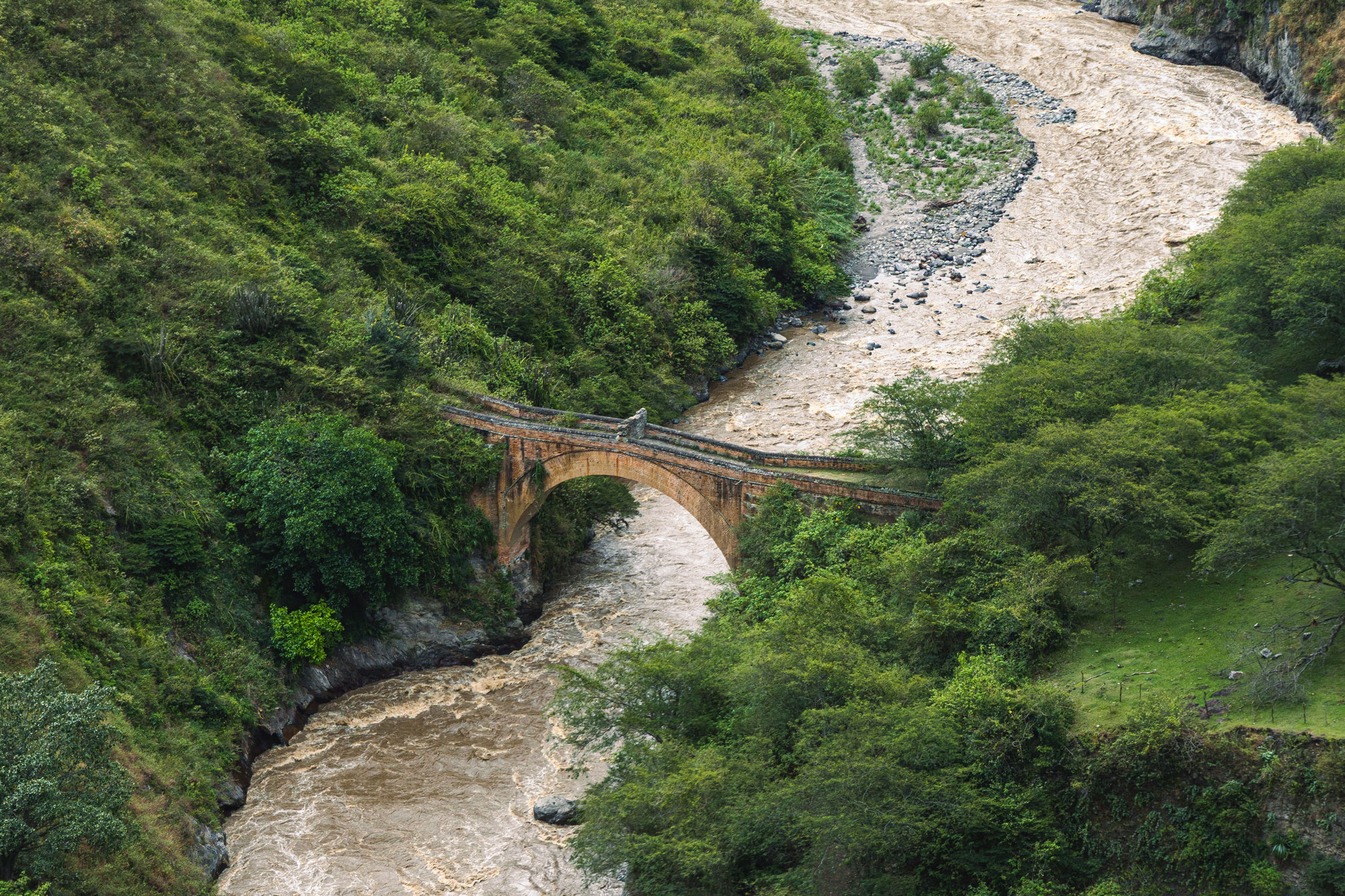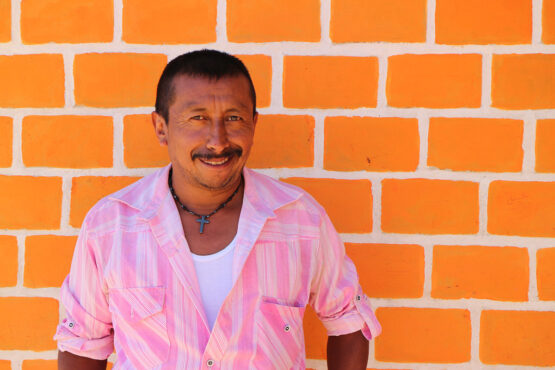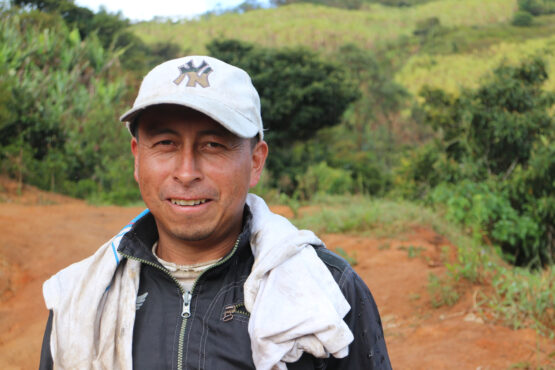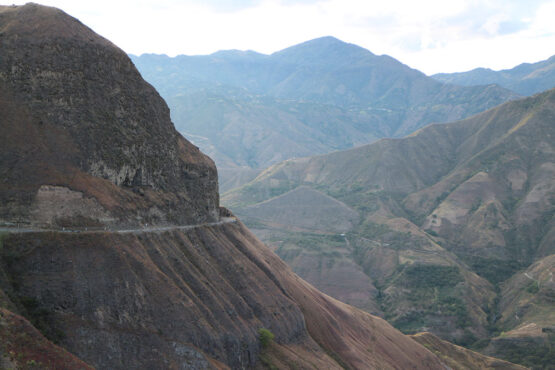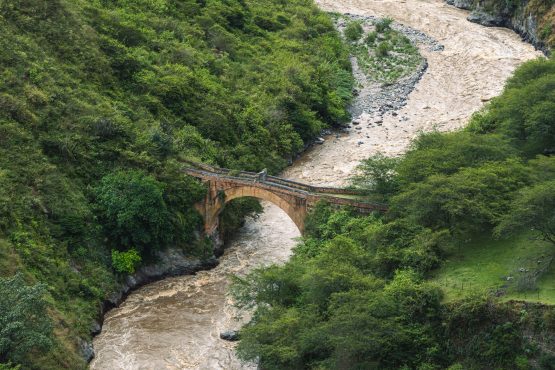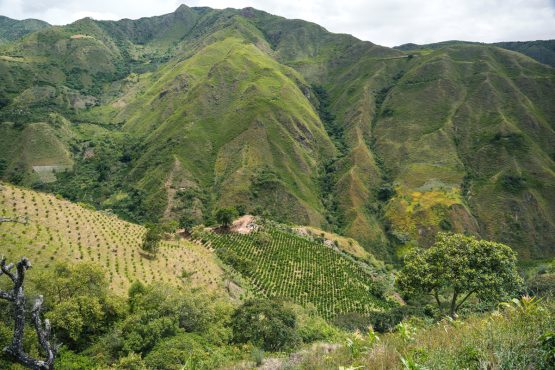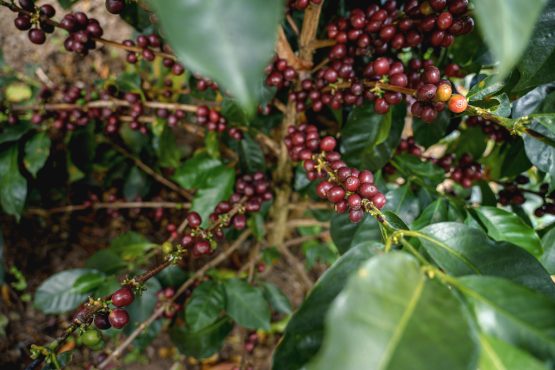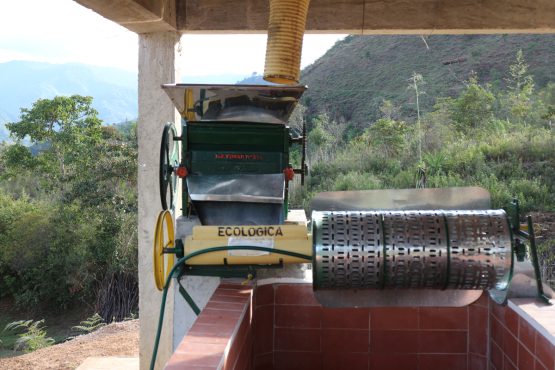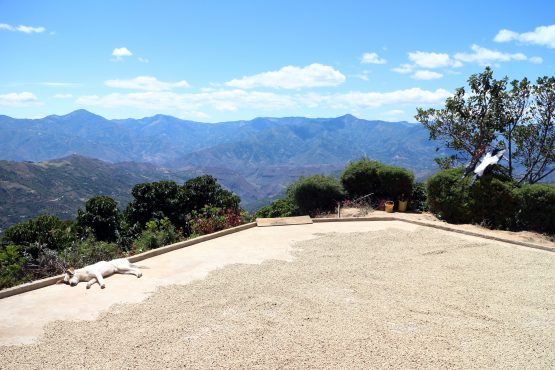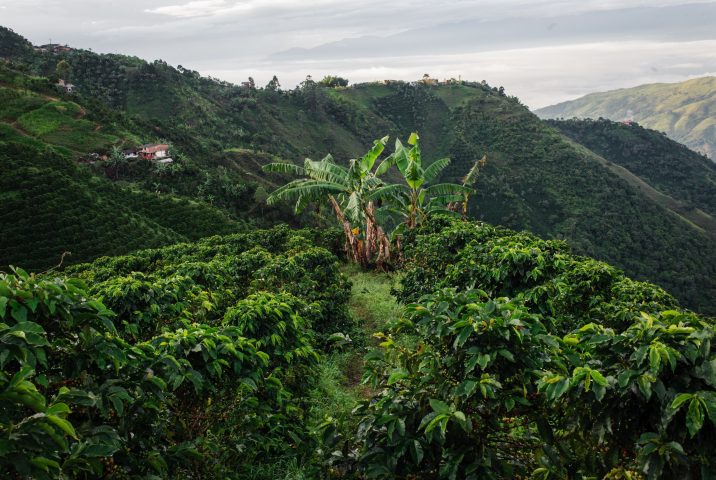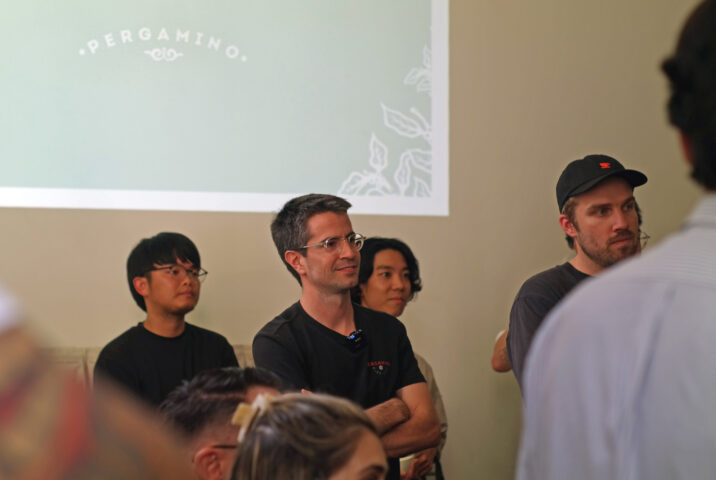Small Producers of Buesaco
Bright and juicy, with a sugary mouthfeel and clean finish. Purple grape, mandarin and brown sugar.
This coffee was produced by eight smallholder farmers from the area around the town of Buesaco in Eastern Nariño, Colombia. The contributing producers, like most in the region, own very small farms – averaging just 1.5 hectares in size – across an elevation of 1,800 – 2,200m above sea level. Surrounded by incredible native vegetation and the mighty Juanambú river, the town of Buesaco is a stunning example of Nariño’s unique landscape.
For a long period in the 1990s and early 2000s, Buesaco was hit incredibly hard by violence and civil unrest, with much of the region under the control of the FARC guerrillas. The high elevations and rugged terrain of rural Nariño was ideal for growing opium poppy plants and coca, making it the perfect centre of operations for illegal groups and preventing a heavy government presence. It wasn’t until the 2010s that guerrillas were forced out of Buesaco, catalysing the transformation of the town into one of Colombia’s best-regarded coffee-growing regions.
Since then, many coffees grown here have performed exceptionally well in Colombia’s Cup of Excellence competition. The consistency of these results demonstrated to many growers that coffee from this region has the potential to be sold specialty lots to the international market, warranting greater premiums than they were receiving through other certification schemes.
Today, specialty coffee plays an important role in Buesaco’s prosperity and in the community’s pursuit of a peaceful future. Most of the region’s specialty-focused farmers began focusing on quality in 2013, when a small group of 17 growers got together and formed the first regional association, called Grupo Empresarial Buesaco. With the assistance of the local technical school, group members organised themselves into a small operation with the aim of buying, warehousing and commercialising exceptional coffee lots. The association grew very quickly and within four years had to form an offshoot group, Alianza Café, to focus primarily on specialty-grade coffee. Its members are committed to running the association with transparent practices, to achieve the final goal of improving incomes for the nearly 400 growers that participate in their programs. Through Alianza Café, our Colombian export partner Pergamino met a number of farmers who are now part of their Allied Producer Program, and with whom they continue to work directly.
Buesaco is the traditional land of the Quillasingas, a people with a long and proud history of agriculture. While few of their population survived the brutal Spanish invasion of Nariño, their cultural heritage still lives on in the sustainable agricultural practices the region’s farmers employ. These learnings are first passed on at home, where each family carefully tends to a chagra, or patch of land dedicated to cultivation. Here, family elders share their knowledge on the making and implementation of organic fertilisers, seed propagation and herbal medicine — which have all contributed to the region’s reforestation efforts.
ABOUT NARIÑO
Nariño is located in Southwest Colombia, bordering Ecuador. Most of the forty thousand coffee producers in Nariño own tiny plots of land (averaging less than two hectares each) and are often located in very remote areas. Coffee in Nariño is grown at elevations that reach 2,200 metres above sea level, making it some of highest grown coffee in the world. Typically, it is very difficult to produce coffee at such high elevations (as many plants suffer from ‘die back’) – however, Nariño’s proximity to the equatorial line and steep hills around the volcanoes provide a great angle for sun exposure, creating the right micro-climate for coffee plants to thrive. The high elevation of cultivation, combined with warm tropical days and cool nights, allows for slow maturation and development of the coffee cherries, giving time for concentrated sugars to develop in the fruit and resulting in a very unique, sweet, and complex cup profile.
Nariño typically has a wet season with periods of continuous rain, followed by a dry season. Because of this, there is only one flowering period a year and, therefore, a single harvest, usually in April – July (this is different to other parts of Colombia where two harvests are the norm). In order to survive, producers in Nariño must have other economic activities, which typically include harvesting and selling plantains, fique (a fiber used to make rope) and/or cuy (guinea pigs).
Our export partners for this coffee, Pergamino, have worked hard to commercialise specialty-grade coffee throughout Nariño, and have uncovered some stunning coffees and dedicated producers in the process. At the beginning of the harvest, the company sends one of their QC technicians (along with equipment like a sample roaster, manual mill, etc.) to spend three to four months on the ground, assisting allied producers and assessing small lots of dried parchment delivered by local farmers hoping to sell their crop. Upon delivery, a sample of the dried parchment is milled and assessed for physical attributes, including uniformity of size, presence of defects, moisture content and seed to hull ratio. If the coffee passes the physical assessment, it is accepted and the farmer receives their first payment for the coffee, calculated by the weight delivered and a base rate that includes a premium on top of the current local market rate.
The coffee is then sample milled, roasted and assessed for quality by Pergamino’s technician and sent weekly to the company’s QC lab in Medellín for further assessment by their expert team. There, each lot is carefully evaluated and, depending on the cup score and profile, sorted into different grades of quality and combined into larger volumes or kept separate as a single estate lot. Feedback on each lot is relayed back to the producer and after it has sold, a second payment is made to them according to the premium the coffee attracted.
The team at Pergamino cups through hundreds of small lots at their QC lab in Medellin, to select the coffees that are blended together into this special regional lot. The coffees included were chosen for their outstanding cup profile and distinct regional characteristics. Head here to learn more about the work of Pergamino.
HOW THIS COFFEE WAS PROCESSED
The coffees in this lot were selectively hand-harvested, with most labour being provided by the farmers and their families. They were processed using the washed method at each farm’s ‘micro-beneficio’ (mill).
The coffee was pulped using a small manual or electric pulper, and then placed into a fermentation tank, where it was fermented for up to 36 hours (depending on the weather and the farms’ location) and then washed using cold, fresh water from surrounding streams. Then wet parchment was then graded by density in washing channels and washed again using clean water.
It was then carefully dried (over 10–18 days) on parabolic beds, which are constructed a bit like a ‘hoop house’ greenhouse, as these protect the coffee from the rain and prevent condensation from dripping back onto the drying beans. These greenhouses are constructed out of plastic sheets and have adjustable walls to help with airflow, and temperature control to ensure the coffee can dry slowly and evenly. Luckily, Nariño is blessed with some of the best drying conditions in the country due to the micro-climate and high altitude of the region, providing lower relative humidity, more wind and more sunny days than other areas of the country.
Once dry, the coffee was delivered to Pergamino’s warehouse, where it was cupped and graded, and then rested in parchment until it was ready for export.
